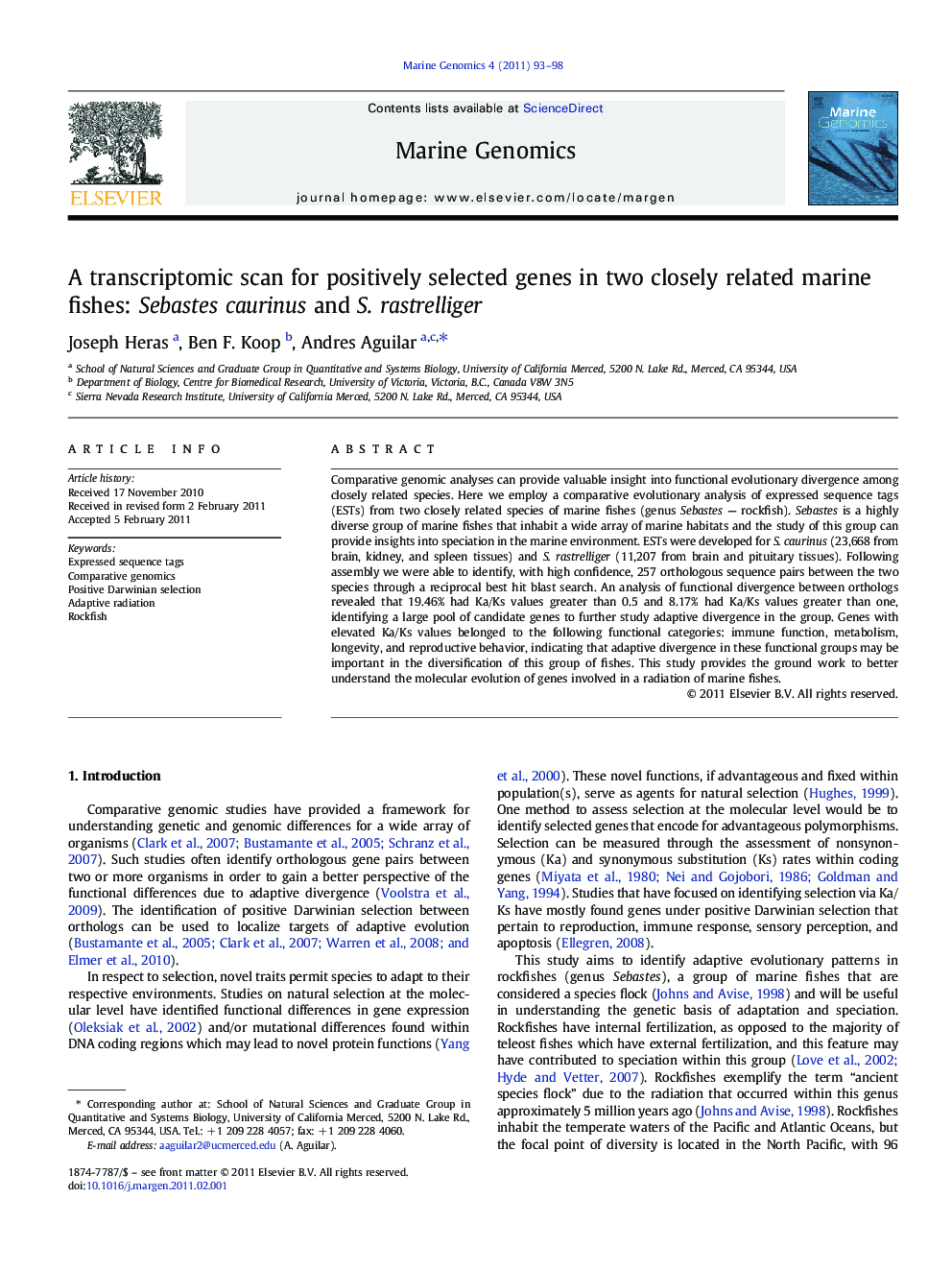| Article ID | Journal | Published Year | Pages | File Type |
|---|---|---|---|---|
| 2058381 | Marine Genomics | 2011 | 6 Pages |
Comparative genomic analyses can provide valuable insight into functional evolutionary divergence among closely related species. Here we employ a comparative evolutionary analysis of expressed sequence tags (ESTs) from two closely related species of marine fishes (genus Sebastes — rockfish). Sebastes is a highly diverse group of marine fishes that inhabit a wide array of marine habitats and the study of this group can provide insights into speciation in the marine environment. ESTs were developed for S. caurinus (23,668 from brain, kidney, and spleen tissues) and S. rastrelliger (11,207 from brain and pituitary tissues). Following assembly we were able to identify, with high confidence, 257 orthologous sequence pairs between the two species through a reciprocal best hit blast search. An analysis of functional divergence between orthologs revealed that 19.46% had Ka/Ks values greater than 0.5 and 8.17% had Ka/Ks values greater than one, identifying a large pool of candidate genes to further study adaptive divergence in the group. Genes with elevated Ka/Ks values belonged to the following functional categories: immune function, metabolism, longevity, and reproductive behavior, indicating that adaptive divergence in these functional groups may be important in the diversification of this group of fishes. This study provides the ground work to better understand the molecular evolution of genes involved in a radiation of marine fishes.
Research Highlights► We assembled and annotated ESTs from two species of rockfish. ► We identified 257 orthologs through a Reciprocal Best Hit BLAST search. ► 21 orthologs were under positive Darwinian selection. ► Gene categoriesinclude: immune function, metabolism, longevity, and reproduction.
